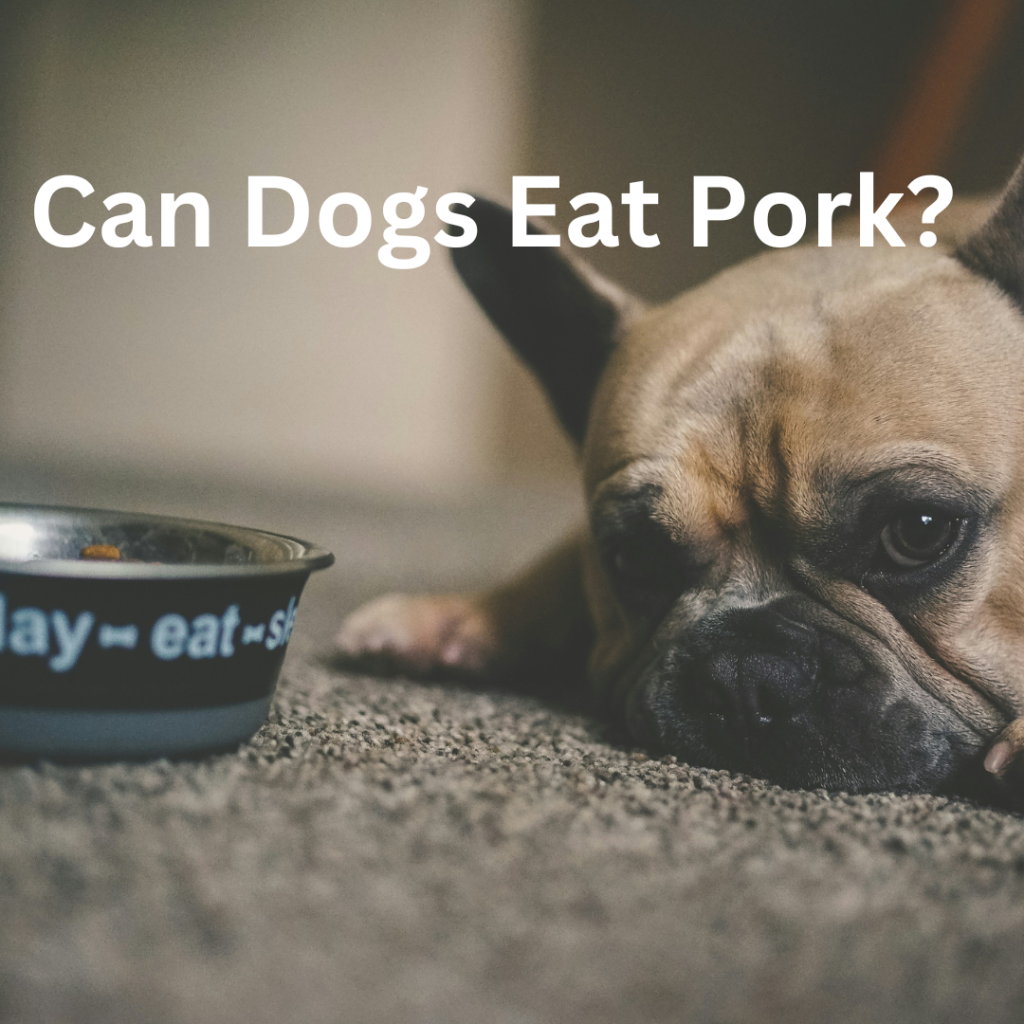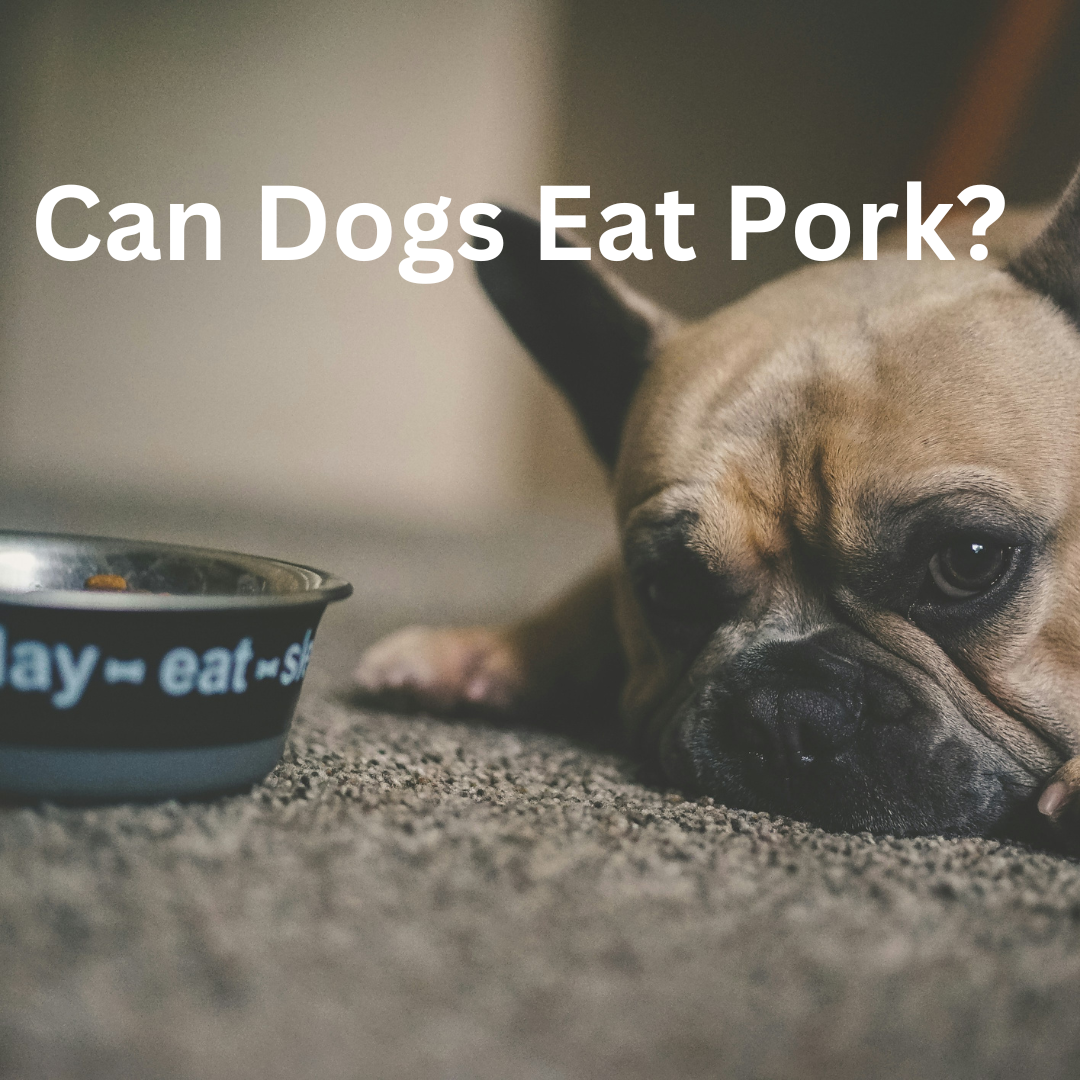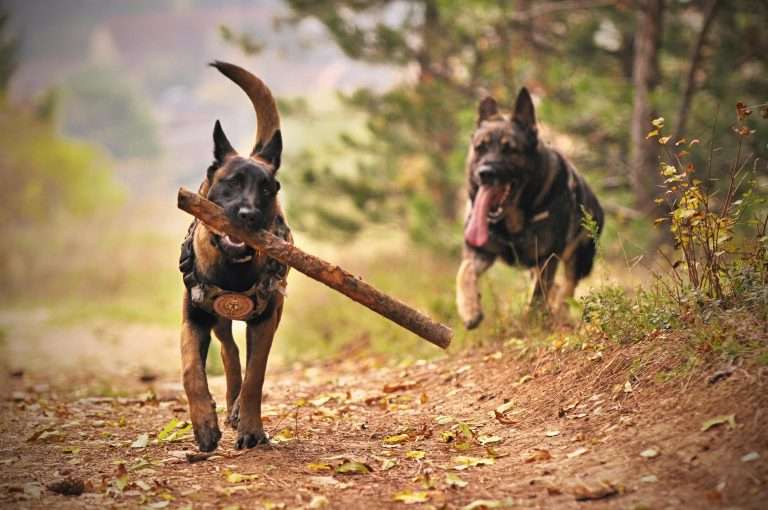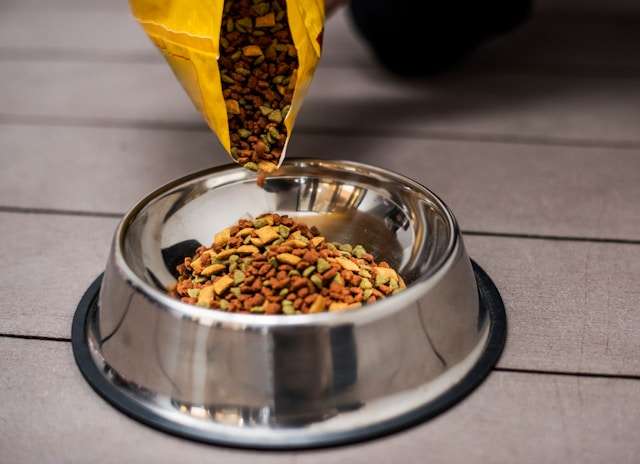Can Dogs Eat Pork? An In-Depth Guide for Dog Owners
Can dogs eat pork? Delve into the complexities of canine dietary needs. We’ll uncover the complete details about including pork in your dog’s diet.
This guide aims to help dog owners. It has all the information they need to decide if their furry friend can eat pork.

As responsible dog owners, we pursue optimal nutrition for our pets. Pork is a standard item in many kitchens, but it often raises questions about its safety for dogs. This section will examine pork’s role in dog nutrition and its potential benefits and risks.
Table of Contents
What Is The nutritional value of pork for dogs?
Pork is more than tasty. It’s a source of critical nutrients: protein, amino acids, and vitamins. Here’s what pork offers dogs: healthy nutrients. We’ll explore the correct serving sizes and when it’s a healthy addition to their diet.
Pork is an excellent protein source, like other meats. It gives your dog critical amino acids. Lean, cooked pork has a protein content of 26%.
Pork also provides essential vitamins and minerals such as:
- Niacin
- Vitamin B6
- Vitamin B12
- Iron
- Zinc
- Phosphorus
- Selenium
- Thiamine
All these help to keep your dog healthy, too.
When Not to Give Pork to Dogs
Pork can give your dog many health benefits. It’s rich in protein, vitamins, and minerals. However, not all pork cuts are nutritious.
Feed lean pork if you feed your dog the pork you’re preparing at home. Some cuts can have a lot of fat. The leanest cuts of pork include the pork loin and the tenderloin.
Ham offers a lean protein choice, but specific cuts contain high salt levels. These salty cuts may not suit your dog’s dietary needs.
Please, Don’t Feed Raw Pork to Dogs!
Many people now feed pets raw meat. They think it’s more digestible and improves their hair, skin, and energy. Indeed, raw diets are generally more digestible than typical commercial dog foods. But don’t feed dogs raw pork. This is because it carries a risk of bacterial contamination. For more information about feeding raw meat to your dog, please see our article about raw chicken for dogs. Is Raw Chicken For Dogs? The Potential Health Risks
What Is Safe Pork Preparation for Canine Consumption?
Preparing pork for dogs is different from preparing it for humans. This section outlines the safest ways to feed dogs. It includes avoiding spices and cooking the meat well, which prevents health risks such as trichinosis.
After cooking pork, it should reach at least 145 degrees Fahrenheit inside. This kills any bacteria. [1]
These ingredients are in seasonings and spice rubs. They pose a threat due to their toxicity, harming dogs if consumed.
- Onion powder
- Nutmeg
- Garlic powder
How much pork can a dog eat?
Like any other food, you try out for the first time, feed your dog a small amount to see if there’s any reaction. Certain meats, including pork, rabbit, and lamb, may cause allergic reactions.
Pork is also fatty, and dogs find it hard to digest the fat, which can cause indigestion and pancreatitis.
Pork Allergies and Sensitivities in Dogs
Some dogs may have allergies or sensitivities to pork. These will cause various symptoms. Here, we’ll discuss how to spot pork allergies in dogs. We’ll cover what to do if you suspect your pet has one. And we’ll talk about the need to ask a vet.
First, before you give your dog fresh-cooked pork at home, check that it won’t cause any health issues. These include stomach upset or symptoms like it’s. This is especially true if your dog has a history of food allergies. Dogs can become allergic to parts of their diets. This most often includes protein.
Dogs with food allergies experience adverse reactions to pork consumption. It’s often found in commercial diets as a by-product, even if it isn’t on the label. Thus, feeding a small amount of pork at a time is a good idea to ensure they can tolerate it well. Stop feeding the pork if any allergy symptoms develop.
Cook plain pork to prevent stomach irritation from added flavors. Lean pork is likely to be well tolerated. But, if you feed fatty meat, you should only give a small amount as a treat, not as a large part of their meal.
Can dogs eat pork uncooked?
Eating raw or undercooked pork isn’t safe for dogs or humans. The parasite Trichinella spiralis larvae can cause a parasite infection known as trichinosis.
Dogs get the infection from infected animal muscles when they eat them, and humans experience the effects more often than dogs. The infection will only produce subtle symptoms in dogs, including [4]
- Upset stomach
- Vomiting
- Diarrhea
- Elevated fever
- Lethargy
- Muscle inflammation
- Pain and stiffness
Alternatives to pork in a dog’s diet.
Many other protein sources exist for dogs that cannot eat pork. They are also for owners who want variety in their pet’s diet. This section explores other meats and non-meat options. They can provide similar nutrition without the risks of pork. [3]
Conclusion: can dogs eat pork?
After considering its nutrition, preparation, and potential allergies, dog owners can decide whether to include pork in their dog’s diet. This section concludes the article, summarizes the key points, and gives final advice for those considering pork in their dog’s diet.
What to read next? The Truth About Dogs and Corn: Can They Eat It Safely?
What Is The nutritional value of pork for dogs?
Pork is more than tasty. It’s a source of critical nutrients: protein, amino acids, and vitamins. Here’s what pork offers dogs: healthy nutrients. We’ll explore the correct serving sizes and when it’s a healthy addition to their diet.
Pork is an excellent protein source, like other meats. It gives your dog critical amino acids. Lean, cooked pork has a protein content of 26%.
What Is Safe Pork Preparation for Canine Consumption?
Preparing pork for dogs is different from preparing it for humans. This section outlines the safest ways to feed dogs. It includes avoiding spices and cooking the meat well, which prevents health risks such as trichinosis. After cooking pork, it should reach at least 145 degrees Fahrenheit inside.
These ingredients are in seasonings and spice rubs. They pose a threat due to their toxicity, harming dogs if consumed.
Onion powder
Nutmeg
Garlic powder
How much pork can a dog eat?
Like any other food, you try out for the first time, feed your dog a small amount to see if there’s any reaction. Certain meats, including pork, rabbit, and lamb, may cause allergic reactions.
Pork is also fatty, and dogs find it hard to digest the fat, which can cause indigestion and pancreatitis.
Can dogs eat pork uncooked?
Eating raw or undercooked pork isn’t safe for dogs or humans. The parasite Trichinella spiralis larvae can cause a parasite infection known as trichinosis.
Dogs get the infection from infected animal muscles when they eat them, and humans experience the effects more often than dogs. The infection will only produce subtle symptoms in dogs, including:
Upset stomach
Vomiting
Diarrhea
Elevated fever
Lethargy
Muscle inflammation
Pain and stiffness







